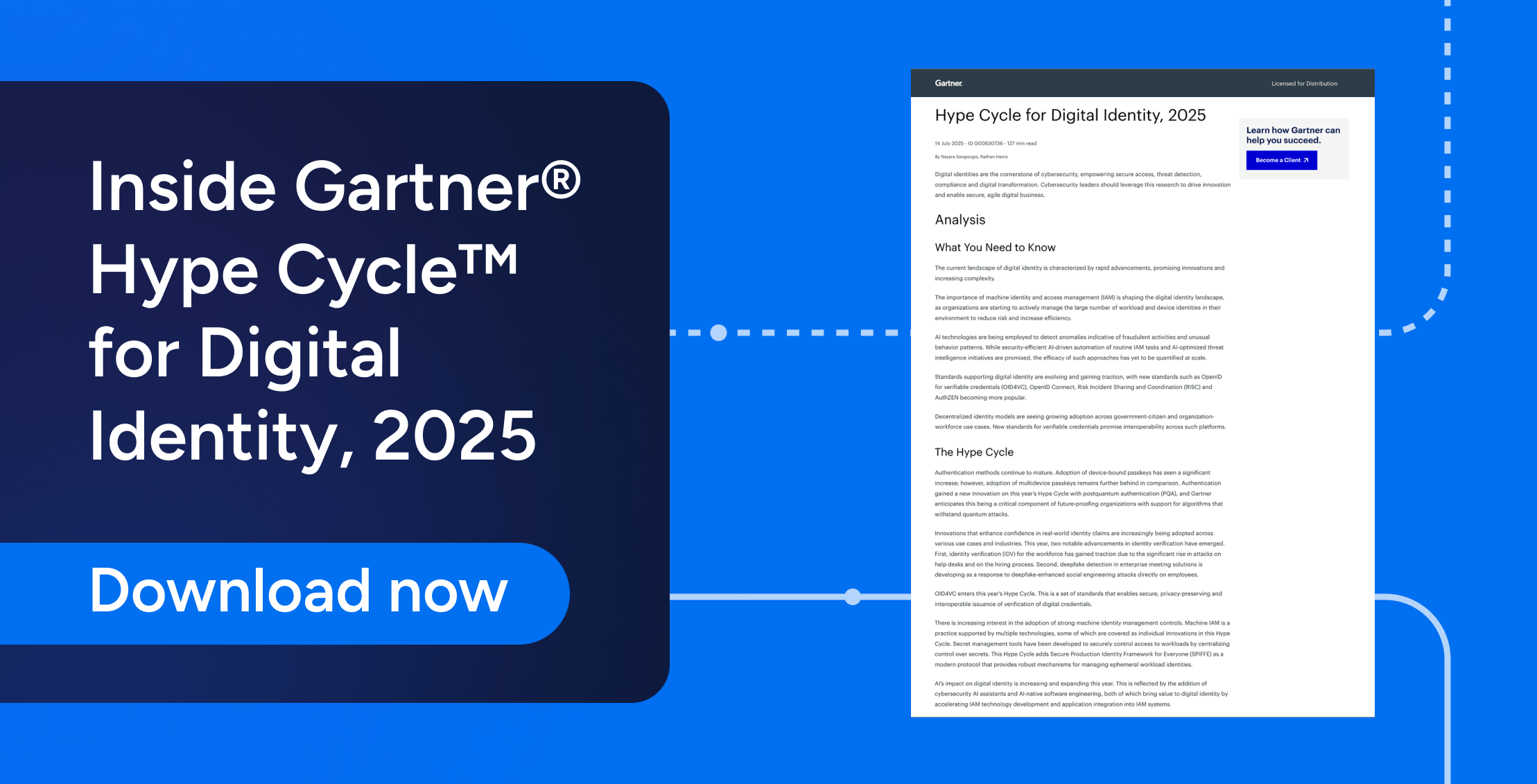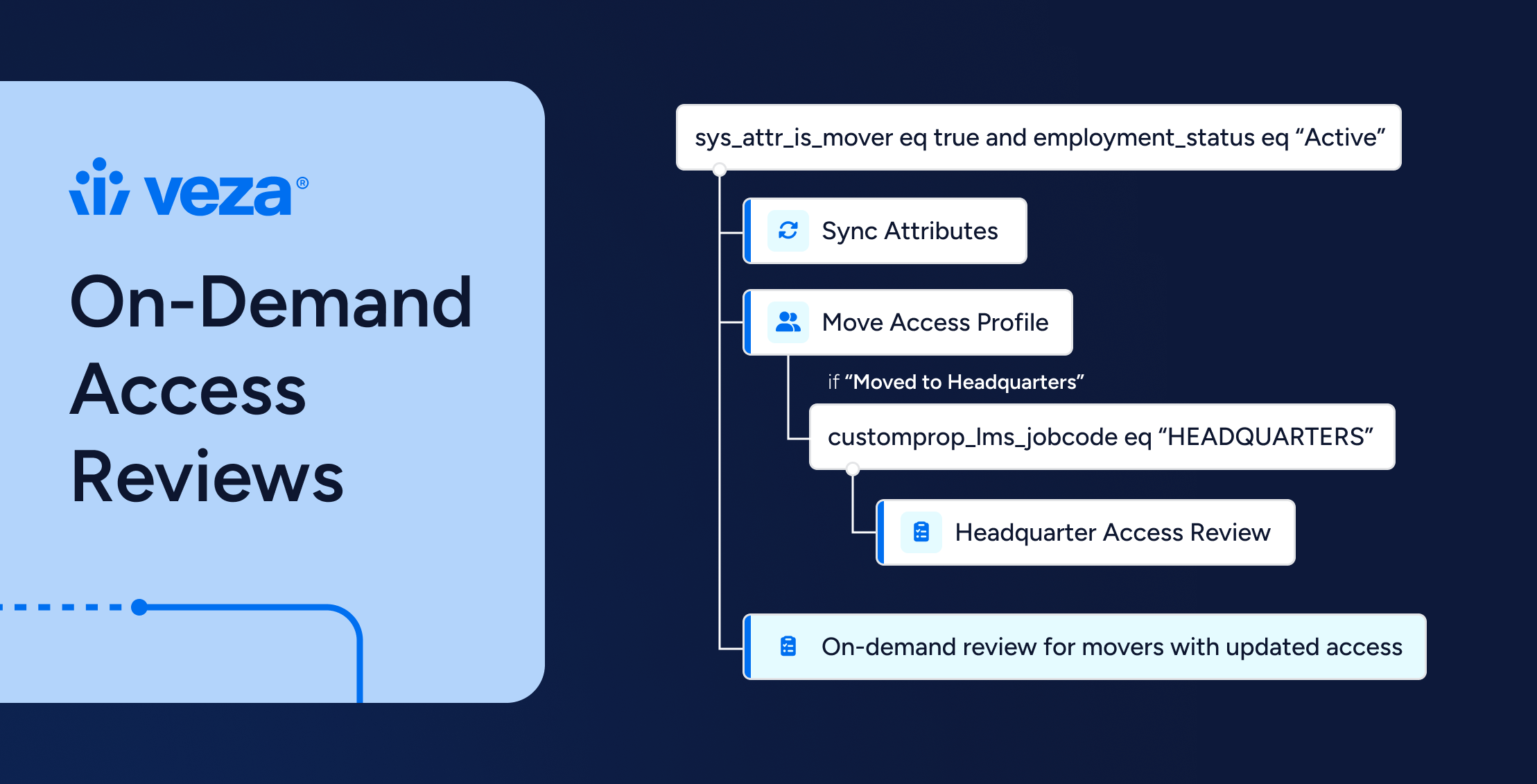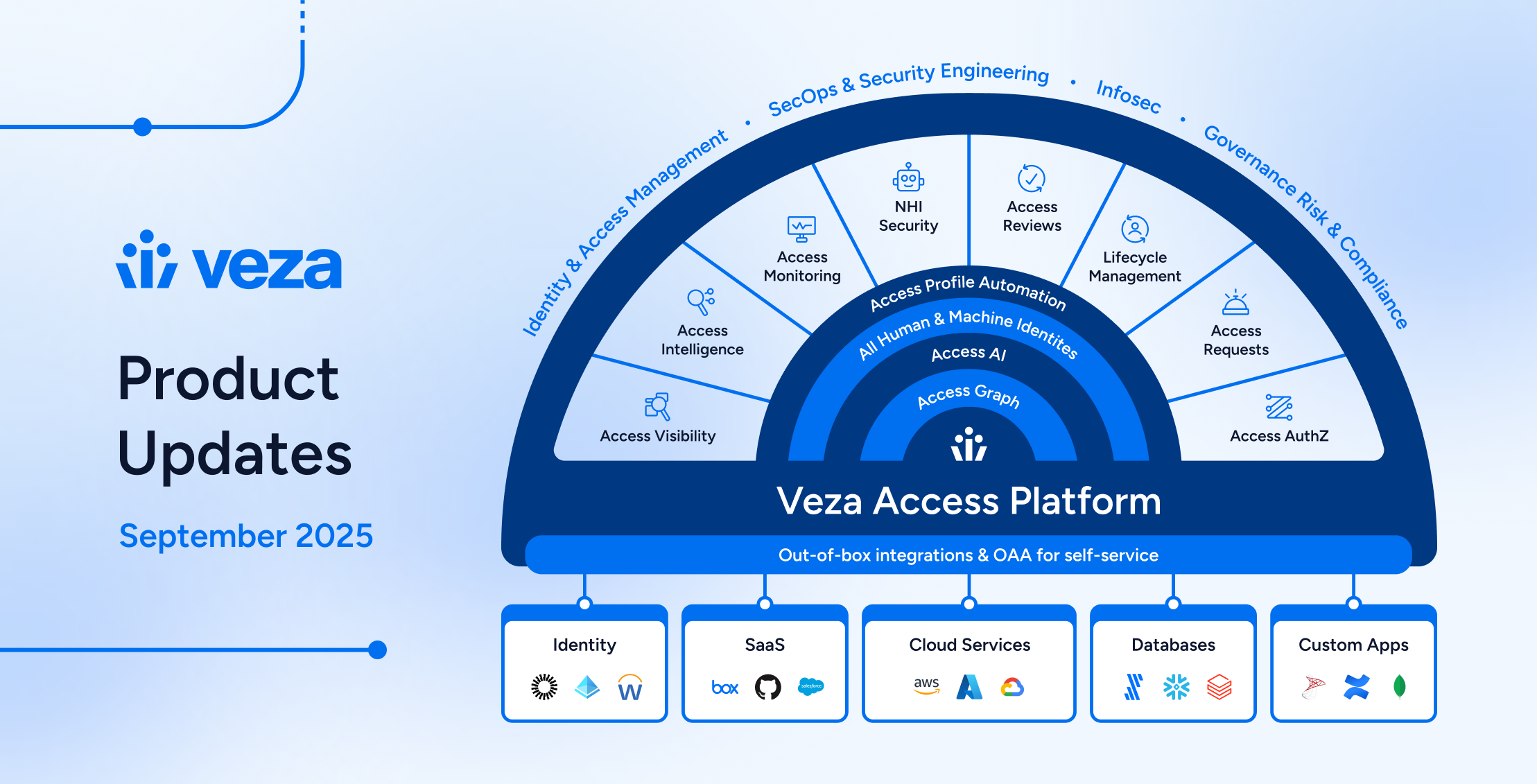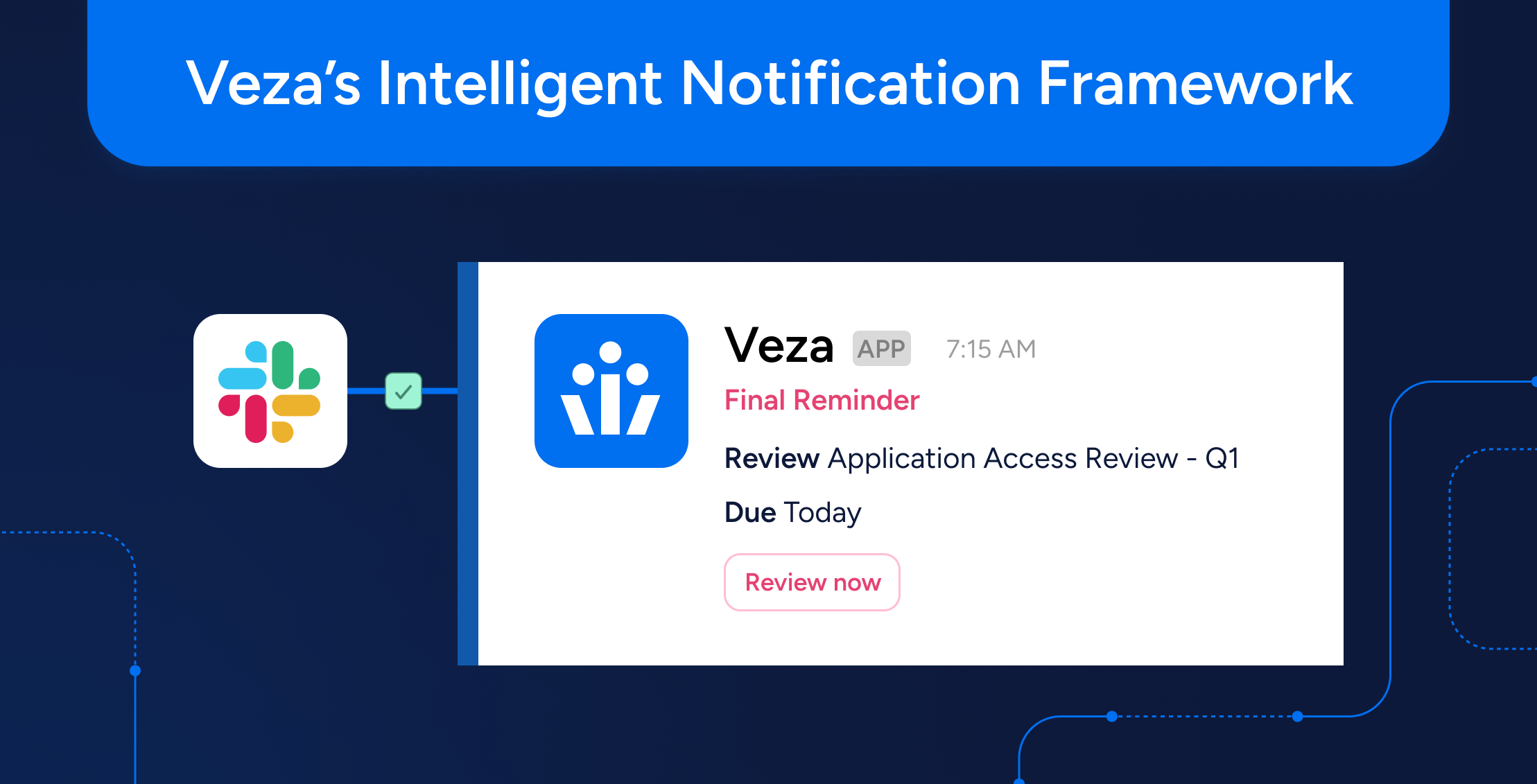
The 2025 Gartner Hype Cycle for Digital Identity is here, and it’s a milestone.
Two categories stand out not just because they’re new, but because they validate what many of us have been discussing for years: visibility is lacking, governance is flawed, and the old ways aren’t working.
Identity Visibility and Intelligence Platforms (IVIP) and AI for Access Administration now have names, traction, and analyst attention. And Veza is proud to be recognized as a Sample Vendor in both. We didn’t build for a hype cycle. We built for the problem.
This blog breaks down what that recognition means, why these categories matter now, and how Veza’s architecture, backed by over a dozen patents, was built for this long before the frameworks caught up.
Why Identity Leaders Should Pay Attention to Gartner’s 2025 Hype Cycle
Let’s get straight to the point: legacy IAM tools aren’t enough anymore.
For years, enterprises have relied on tools like IGA for lifecycle management, PAM for secrets, and IDPs for login. Each serves a function, but none can tell you:
- Who has access to what?
- Why do they have it?
- What can they do with it?
- And is that still OK?
Security engineers, auditors, and identity teams know the pain: siloed systems, static exports, painful certifications, and access that’s granted but never reevaluated. The result? A sprawling, ungoverned mess of permissions, human and machine alike, that no one can see, much less control.
The 2025 Hype Cycle addresses this gap head-on with two emerging categories:
- Identity Visibility and Intelligence Platforms (IVIP)
- AI for Access Administration
What Is an Identity Visibility and Intelligence Platform (IVIP)?
Gartner defines IVIP as an emerging framework that “gathers, categorizes, and visualizes identity data across directories, tools, and multiple IAM domains.” In plain terms: IVIP gives you the visibility your IAM stack never could.
At Veza, we’ve been calling this access intelligence for years. IVIP now formalizes the function.
Key Benefits of Identity Visibility and Intelligence Platforms
An Identity, Visibility, and Intelligence Platform enables:
- Correlating access across SaaS, cloud, on-prem, and hybrid systems
- Mapping permissions, entitlements, and roles into a unified access graph
- Answering real-world questions like “Which service accounts have production write access?” or “Why does that intern still have GitHub admin?”
- Supporting Zero Trust, access reviews, and incident response with actual intelligence
Veza’s role in this space isn’t hypothetical. It’s operational. Our platform delivers on IVIP capabilities by design—see our breakdown here: What Is an Identity Visibility and Intelligence Platform?
AI for Access Administration: Automating the Pain Away
AI in IAM isn’t about replacing humans. It’s about augmenting decision-making, reducing review fatigue, and proactively identifying access risk before it becomes a ticket or a headline.
AI That Works Where It Hurts
Veza’s platform applies AI in real, immediate ways:
- Review automation: Suggesting revokes based on inactivity or toxic combinations
- Anomaly detection: Highlighting risky privilege escalations or dormant high-risk access
- Access requests: Powering approval flows with full visibility into the access graph and contextual risk
We’re not just layering AI on top; we’ve patented how it interacts with your access model. That includes ML-powered risk scoring, dynamic policy enforcement, and natural language queries that make access reviews human-friendly again.
Learn more about how AI fits into real-world identity governance in our upcoming blog, “Architecture Matters: A Look at the Patents That Shaped Veza’s Access Intelligence Platform.”
Sample Vendor in Gartner’s 2025 Hype Cycle: Why It Matters for Identity Security
“Sample vendor” might sound understated, but it’s meaningful. It means Gartner sees Veza as representative of how the space is forming, and where it’s headed.
We didn’t build into these categories after the fact. Our architecture, patents, and platform were already there, years ahead of the curve. The frameworks just caught up.
Take, for example:
- US20220067186A1: Our patent for graph-based privilege traversal—laying the foundation for access correlation across clouds, systems, and identity providers.
- US20240406177A1: A risk inference engine that models blast radius and toxic permissions before an incident.
- US20240095279A1: AI-driven access request evaluation using real-time context from our unified access graph.
That’s just a sample of over a dozen filed patents that represent the intentional, architecture-first design of the Veza platform.
Why This Matters Now
IVIP isn’t just another acronym—it’s a response to a real-world gap. Traditional identity tools weren’t built to answer today’s hardest questions about access:
- Who can take what action, on what data?
- Where are the risks?
- And how do you prove it?
Your board is asking tougher questions. Regulators are tightening expectations. And attackers—human or machine—are exploiting access faster than ever.
The good news? You don’t have to rip and replace your stack to keep up.
With IVIP and AI for Access Administration, Veza helps you:
- Visualize what identities can do, across SaaS, cloud, and on-premises
- Understand the context behind that access
- Act with confidence, automating governance with risk in mind
You already have IGA, IDP, PAM, and CIEM. What you need now is the intelligence layer that pulls it all together. That’s what IVIP was created to describe—and what Veza has delivered since day one.
We’ll be sharing a deeper look at how Veza supports IVIP in the coming weeks. Stay tuned for the breakdown.
Start Exploring
- Download the full 2025 Gartner Hype Cycle for Digital Identity report
- Want to see IVIP in action? Check out our explainer: What Is IVIP?
- Understand the threat landscape: Read the 2024 State of Access Report
- Solve real-world problems: See how customers are securing Salesforce, GitHub, Workday, and more: Veza SaaS Access Use Case
- See the future of governance: Learn how access reviews can work with context: Identity Security Posture Management
Final Thoughts: Built for This Moment
Recognition in the Gartner Hype Cycle isn’t just a moment of validation—it’s a marker of market shift.
The old ways of managing identity, spreadsheet-driven certifications, siloed systems, and too much standing privilege don’t scale in a world of AI agents, hybrid infrastructure, and 40-to-1 machine-to-human identity ratios.
Veza was built for this challenge. We saw the visibility gap long before it had a name. And now, with frameworks like IVIP and ISPM taking center stage, we’re ready to help security teams move from access chaos to access clarity, backed by architecture, not buzzwords.
Because when it comes to access, if you can’t see it, you can’t govern it.
And you definitely can’t secure it.






